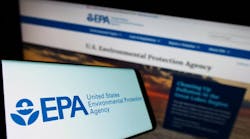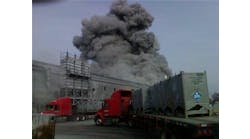Shortly after he took office, President Joe Biden issued executive orders aimed at protecting public health and the environment. In part, his directive called on the government to shape policy using the “best science.” He specifically mentioned clean air and water, chemical and pesticide hazards, pollution accountability, environmental justice and climate change mitigation as priorities.
The administration’s actions have drawn the ire of industry advocates who say they’re burdensome, unnecessary and based on bad science or incomplete data, while some environmental activists say the efforts are not enough.
What is clear is that regulations are continually evolving, and chemical manufacturers will need to keep a close eye on where they stand to remain in compliance. For the chemical industry, efforts to limit, ban or phase out production of per- and polyfluoroalkyl substances (PFAS) were the dominant regulatory issues on the table in 2022.
The federal government proposed updates to existing rules targeting PFAS manufacturing and reporting requirements, while some companies, such as 3M, announced plans to phase out PFAS production. The administration also proposed changes to air-quality standards, which could also have a significant impact on chemical manufacturing in the U.S. While many other regulations impact the industry, legal experts cited PFAS and new air pollution standards as two of the most significant regulatory changes to watch in 2023.
Expanded PFAS Reporting
In the United States, chemical manufacturers or importers of products containing PFAS can expect to see new reporting requirements in 2023 under the Toxic Substances Control Act (TSCA). The rule, proposed in November 2022, would require any company that manufactured or imported PFAS after Jan. 1, 2011, to submit to the U.S. Environmental Protection Agency (EPA) a report that includes information under TSCA Section 8(a)(7) that includes information about PFAS uses, production volumes, disposal, exposures and hazards.
“Absent major changes to the final rule, the rule will place a significant burden on chemical manufacturers to assemble and report over a decade of information and then maintain those records for a five-year period on a potentially very significant number of chemicals and mixtures,” says Christopher Clare, a senior attorney with Clark Hill in Washington, D.C.The EPA estimated the new reporting requirements would cost small businesses about $863.5 million. In the Federal Register notice, the EPA said it is considering changes to the final rule based on updates to the impact on the economy, small businesses, the handling of confidential information in PFAS reporting and significant regulatory alternatives presented in the financial analysis.
In addition, on Jan. 26 the EPA proposed a significant new use rule (SNUR) for PFAS products that are listed as inactive because they haven’t been manufactured, imported or processed in the U.S. since 2006. The SNUR would prevent companies from starting or resuming the manufacture, processing or use of an estimated 300 PFAS.
The American Chemistry Council (ACC) has criticized the EPA’s handling of TSCA, saying the agency has overestimated the risks of TSCA chemicals and mischaracterizes workplace exposures. On Jan. 17, ACC issued a “9 in 9 Challenge” that called on Congress and the EPA to take nine actions in 2023 to fix TSCA. This includes a request that the EPA use scientific data provided by industry and stakeholders that are based on actual conditions of use instead of including potential misuse of chemicals or speculation in their evaluation.
ACC also called on the EPA to manage TSCA more efficiently, provide more financial transparency into its fees and accountability, develop clear guidelines on the type of data needed for an evaluation, and to meet its chemical review deadlines.
However, Jonathan Kalmuss-Katz, senior attorney with a nonprofit environmental law group called Earthjustice, says ACC’s TSCA recommendations “are relics of the Trump administration” and take a piecemeal approach to risk evaluations by looking at each condition of use in isolation rather than examining the cumulative effects that people face from a combination of uses and exposures. He also notes, in reference to ACC’s objection to fee increases, that the funding is necessary to conduct reviews and lawfully implement TSCA.
“While there is certainly room for improvement in EPA’s TSCA implementation, the answer is not to deprive a cash-strapped agency of critical funding, to reduce EPA’s authority to require chemical testing, or to pretend that people are only exposed to a chemical from a single source and single condition of use,” he says.
He adds that ACC also wants EPA to factor in the use of personal protective equipment (PPE) when making risk determinations. Under the Biden administration, the EPA determined that PPE was no longer sufficient to determine adequate protection for workers during TSCA reviews. For instance, in its review of carbon tetrachloride the EPA said assuming the use of PPE did not account for workers who may face high exposure because they are not covered by Occupational Safety and Health Administration (OSHA) standards (such as self-employed or public-sector employees) and workers whose employers are not compliant with OSHA standards. The EPA also noted that OSHA describes its own chemical-specific permissible exposure limits as “outdated and inadequate for ensuring protection of worker health.”
According to ACC, by not taking into account PPE, the EPA is not complying with TSCA’s statutory requirement to “describe the weight of scientific evidence for the identified hazard and exposure” and is painting an unrealistic and inaccurate picture of the workplace environment and overestimating the risk to workers.
PFOA and PFOS Added to Superfund
The EPA is finalizing a proposed rule that would designate two PFAS—perfluorooctanoic acid (PFOA) and perfluorooctanesulofonic acid (PFOS)—as hazardous substances under the federal Comprehensive Environmental Response, Compensation and Liability Act (CERCLA), also known as Superfund, according to Clare.
The rule would require facilities or vessels to immediately report PFOA and PFOS releases that meet or exceed the reportable quantity to the National Response Center or other relevant authority, says Jessica Rosell, counsel with the law firm Lathrop GPM in Kansas City, Missouri.
“While entities would not be required to report past releases of PFOA or PFOS, because PFAS are ubiquitous in the environment, a final hazardous substance designation will increase the number of sites subject to remediation under the federal Superfund program,” she says.
Chemical manufacturers will need to factor in the risk of such designations and potential future CERCLA liability when making decisions on how to treat and where to send PFAS-related wastes from their facilities, Clare says.
The designation also could lead to further remediation of Superfund sites, Rosell says. It would add significant costs for facilities that have historically used PFOA or PFOS or have legacy contamination.
“With EPA’s proposed designation of PFOA and PFOS as hazardous substances, sites that have been closed, and either require no additional clean up or only require regular monitoring, could be reopened, and the agency could require additional cleanup of these newly designated hazardous substances,” Rosell adds.
The comment period on the proposed rule ended on Nov. 7, and the EPA expects to issue a final rule by the summer. While PFOA and PFOS manufacturing are no longer ongoing in the United States, chemical manufacturers should expect future hazardous waste designations, which have already begun on the state level.
Clean Water Act Updates
Concerns over PFAS detection in waterways and fish have led to new EPA guidance released on Dec. 6 on how states can use the Clean Water Act to restrict the discharge of PFAS at its source. The memo recommends that states use the most current sampling and analysis methods in their National Pollutant Discharge Elimination Systems (NPDES) programs to identify known or suspected sources of PFAS and to take actions using their pretreatment and permitting authorities, such as imposing technology-based limits on sources of PFAS discharges, the EPA notes. NPDES is a permit program created in 1972 by the Clean Water Act that addresses water pollution by regulating point sources, such as a pipe, ditch, ship or smokestack, that discharge pollutants to U.S. waterways.
The guidance recommends that states require industrial dischargers to use best management practices, such as eliminating and substituting products when a reasonable PFAS-free alternative can be used in an industrial process, minimizing accidental discharges via operations improvements and good housekeeping practices, and replacing or decontaminating equipment following the substitution of PFAS-free products, says Clare.
“States like Michigan and California have already begun to include certain PFAS-related requirements into their NPDES permitting programs, and this new guidance will likely lead to numerous other states taking action to identify and regulate PFAS dischargers,” Clare notes. “The chemical manufacturing industry will undoubtedly be subject to any such additional PFAS-related requirements in future NPDES permitting, which could result in the need for both physical and operational changes.”
Clean Air Act Updates
On Jan. 6, the EPA issued a proposed revision to national ambient air quality standard (NAAQS) for fine particle pollution. The final rule is expected to lower the primary annual standard for fine particulate pollution from 12.0 µg/m3 to a range of 9.0 to 10.0 µg/m3.
Fine particles, also called soot, can penetrate deep into the lungs and cause serious health problems, such as asthma, heart attacks and premature death, according to the EPA. The agency also noted that it disproportionately affects vulnerable populations, including children, older adults, people with heart or lung conditions, as well as communities of color and low-income communities throughout the United States.The rule is expected to be finalized later this year, according to Clare.
“Once final, the rule will likely impact the chemical manufacturing industry and require operational changes,” Clare says. Some of these changes may include implementing new best management practices and the installation of new equipment, he says.
Chemical manufacturers can expect to incur additional costs to comply with the standard, says ACC’s White. “If the EPA makes significant changes to the existing standards, then implementation of those standards could have a considerable impact on manufacturing operations and result in a significant increase in compliance costs for manufacturers across the country,” she says.
The guidance outlines eight principles and practices that federal permit writers should consider when developing air permits. Among them is a recommendation that regional offices conduct an environmental justice evaluation that considers several factors, such as demographic data indicating vulnerabilities, environmental data, facility compliance records, public health data and adverse impacts not related to health, such as noise, odor and traffic.
Chemical industry operations will likely need to adapt their planning processes if regulators adopt these measures, Walker says.
“Before beginning new permitting projects, renewals, modifications and transfers, particularly for major sources, it is critical to assess a project for environmental justice considerations as crucial factors in a project’s implementation timeline, cost and technical feasibility evaluation,” he explains. “Projects that fail to do so may encounter increased scrutiny, delays and hostility from the local community.”
Walker suggests that facility managers consider using EPA tools, such as EJScreen, to evaluate whether a project is located in an environmental justice area and if circumstances warrant a plan for addressing the potential community impact throughout the life of the project. It may also be helpful to proactively engage with regulatory officials during the project design, he says.
The chemical industry will play a critical role in improving air quality through clean-energy technologies, says ACC’s White. She points to hydrogen hubs — networks of clean hydrogen producers, consumers and connective infrastructure — and carbon capture, utilization and storage to capture emissions from plant operation as two examples of how the industry can be proactive in this area. “There needs to be, I think, a very strong active regulatory process to help support moving those technologies forward,” she says.
Challenges Ahead
The Biden administration has embarked on major policy changes around chemical management, notes Bergeson & Campbell P.C. in its 2023 chemical industry regulatory forecast.
Republican control of the U.S. House of Representatives should invite more scrutiny of EPA actions, especially as they relate to TSCA, the firm notes. Policy continues to evolve in ways that are not always predictable or consistent, according to the report. The Office of Chemical Safety and Pollution Prevention will move forward with decision on controls or restrictions on specific chemicals or pesticides, even with a divided government, according to the report.
“For the industrial chemicals programs, the slow pace of reviews for new chemical submissions and the announced inability of the program to meet the legislative deadline for the first round of chemical assessments will be of concern for both lesser and greater regulatory controls on chemical products,” the authors note.








